
Smallest sphere represents the moons position ...
The ob-long sphere represents the pull on the earths oceans...
The yellow sphere represents the sun.
The earths tides (raising and lowering of sea water on a cyclic basis) are caused by the moon and the sun, but the sun plays only about 1/2 as much a role due to its much greater distance. The force of gravity pulls an object to it. If the earth were alone in space, then the water around the earth would eventually seek a constant level. As we discussed in chapter 1, the earth bulges slightly at the equator due to its spinning on an axis, otherwise the water would eventually have the same degree of inward pull in all directions.
But, we are not alone, we are locked in orbit around a massive star, and we have a moon circling us on average once every 28 days. The moon and sum also have a gravitation pull. The pull of gravity is affected by two things, the mass of the object and the distance from its center.
The sun is very massive but also very far away (93,000,000 miles), the earth is far more massive than the moon and "very close". The moon is not as massive as either the sun or earth, but is much closer than the sun and thus exerts a pulling force at the earths surface.
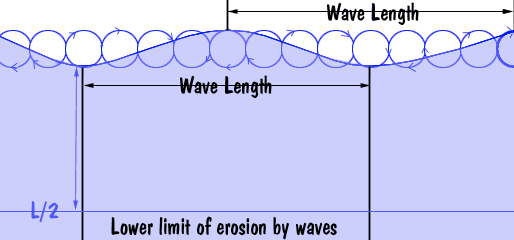
Ocean waves get their energy from the wind. The tiniest ripple to the largest sea going wave are a function of wind speed, duration, and distance.
Waves form in water loops, which are equal to the wave height. Measure either the tops of two adjacent waves or the troughs of two adjacent waves and you get the wavelength. The base of a wave is considered to be L/2 (wavelength divided by 2). This depth is called the wave base. It is also the lower limit of erosion.
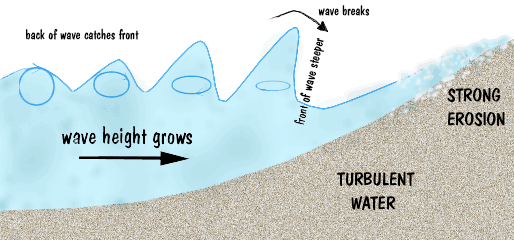
Wave Action: As the land under a wave becomes more shallow, the energy of the wave first pushes the height upward. Since the leading edge of the wave slows before the trailing edge, the wave becomes thinner and leans forward. Eventually it tumbles over (or breaks). The remaining energy is spent by the water climbing the beach until it can move no further. Then gravity pulls the high water back into the ocean.
As a general rule waves slow down in shallow water and maintain speed in deeper water. Hence as a wave approaches a shore line, the "head lands" those areas sticking out further will be shallower sooner and the waves will slow and grow there first.
They will eventually realign themselves until they mirror the coast line, (This is wave refraction). Hence there is more erosion at the headlands and less in internal bays. The net result is that the wave will tend to remove detail from shorelines and make them flatter and less indented over time.
Nearly all of the energy in waves, at low tide and during storms takes place within a 20 m band (10 m below the sea level and 10 m above the sea level. Storm surges can be huge in shallow water areas.
As waves pass a point of land (1), they begin to slow due to friction. the outter most area of the wave does not see the same level of friction until it gets much closer to shore. Hence the wave shape "bends" or we say it is refracted by the point of land.
The velocity of the wave slows near the point, but stays roughly constant throughout the rest of the wave.
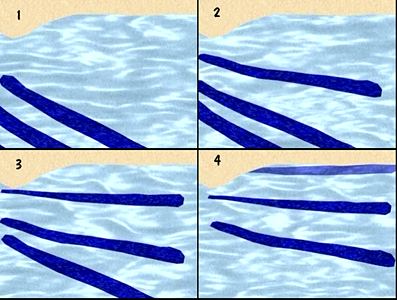
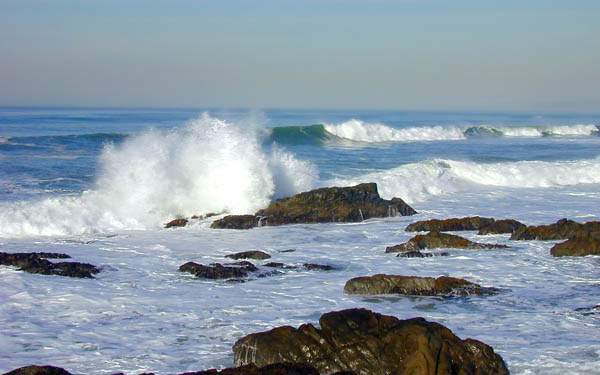
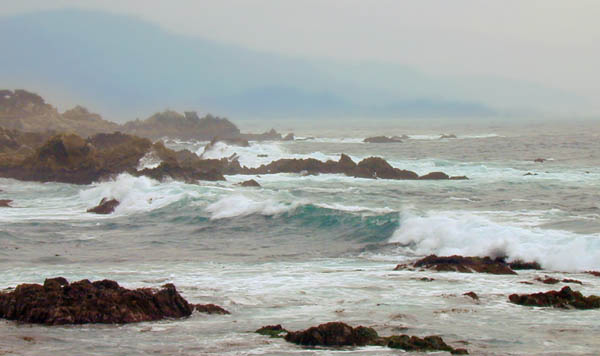
| NEXT | TOC | PREV |